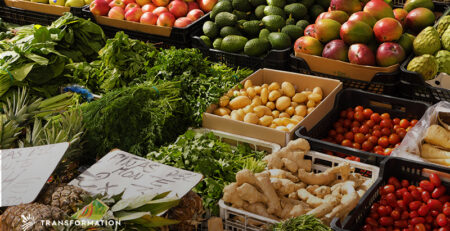Financing Regenerative Agriculture
Land, including its expansive water bodies, provides the basis for human life and livelihoods through primary productivity, food supply, clean water, and many other ecosystem services. In 2011, the world’s total terrestrial ecosystem services were valued at US$75 trillion per year. Even though the Earth’s resources are limited, they have not been treated as such in the past century. Unless urgent action is taken to stop and reverse the overexploitation of land, current trends will continue to drive a cycle of conventional agriculture and climate change, with potentially irreversible effects.
The general population is now aware of the devastating effects of climate change. With record-breaking high temperatures in the Northern Hemisphere and over a million acres burned in California in August 2020, extreme weather events are increasingly viewed within the context of climate change. Today, climate change is a top issue for voters, and mainstream media platforms are spreading awareness. But where does the investment community come into play?
Farmers
Limited access to capital due to perceptions of low profitability and high risk have prevented farms from transitioning from conventional to climate-smart agriculture. Due to undersized capital markets, smallholder farmers often have limited access to loans and insurance. As a result, there is insufficient opportunity to build credit history and, therefore, do not have the financial means to shift to practices that would increase environmental resiliency and productivity.
Supporting farmers in the transition to sustainability is a direct link to mitigating the detrimental effects of land degradation. Therefore, significant capital needs to be deployed both on farms and across value chains to finance initial transitions from conventional to climate-smart agriculture. Specifically, regenerative agriculture is gaining steam in the investment world.
Regenerative Agriculture Movement
Regenerative agriculture broadly describes holistic farming operations that work with natural systems to restore biodiversity, ecosystem services, and the resilience of rural communities. Regenerative agriculture and other farming practices that ardently build soil health, restore land, and sequester carbon have the potential to draw down more carbon dioxide from the atmosphere than any other sector. Furthermore, regenerative agricultural operations repurpose waste into soil amendments or added-value products. These practices ultimately will protect our most valuable assets: soil, air, and water.
According to the 2018 research report titled Soil Wealth: Investing in Regenerative Agriculture Across Asset Classes, the leading professionally-managed asset classes supporting regenerative agriculture are:
- Real asset investments in farmland
- Private equity investments in companies supporting regenerative agriculture value chains (including small food and agricultural businesses, larger private brands, publicly-traded multinational corporations)
- Private debt investments in both farms and firms (relatively low rates of return, but stacking capital in coordinated ways should yield results for investors)
Because bank financing remains the leading form of financing farms and businesses in rural communities, the report also suggested that the following asset classes are at a point of inflection and are ready for rapid development:
- Real assets in farmland
- Cash investments in money-market funds/depository products at regulated banks or credit unions, such as interest-bearing checking, savings, and money-market accounts, or certificates of deposit (CDs)
- Fixed income in publicly traded debt securities (bonds and bond funds) and private markets (primarily through private debt funds or notes)
Conclusions
Climate mitigation, adaptation, and resilience are only some of the benefits associated with investing in regenerative agriculture. From a social equity perspective, focusing on sustainable livelihoods and place-based approaches could also generate dialogue among various stakeholders, such as regenerative agriculture stewards, food entrepreneurs, and low-income communities facing severe health and economic disparities. In this case, place-based approaches to investing in value chains throughout regenerative farming systems would provide a useful framework to advance sustainable development goals (SDG). There are many different avenues to financing regenerative agriculture, but in the long run, heightened blending of private investment along with catalytic sources of capital from philanthropy and government at multiple levels will yield the best results.




Leave a Reply